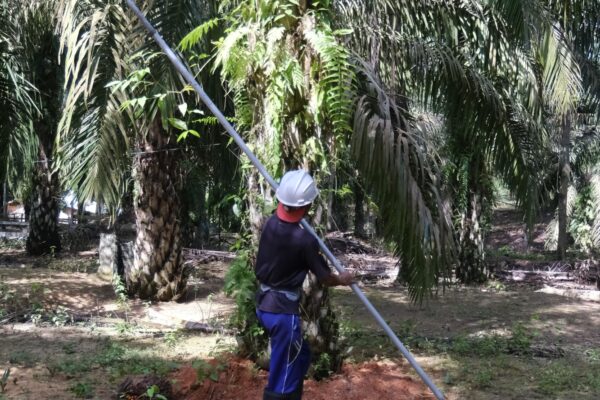3-4 minute read
Sofia worried every time Adam, her husband, went to work. Adam worked most nights to load trucks transporting timber to nearby Perawang or Pekanbaru, Indonesia.
It would be between two and five in the morning before he returned home.
“I wasn’t too worried about wild animals,” Sofia said. “I was worried about him being arrested.”
Avoiding law enforcement was the reason Adam and his colleagues chose to work in the dark. Logging from forests around their village is against the law. Forests here are divided into an Asia Pulp & Paper (APP) conservation area and a wildlife reserve managed by the Riau Natural Resources Conservation Agency. Both are part of the 700,000-hectare Giam Siak Kecil Peat Biosphere Reserve, a predominantly peat swamp area that acts as a natural water reservoir, carbon sink and wildlife habitat for species such as the Sumatran elephant and tiger.
As a concession holder in the area, APP has set aside land for conservation following HCV (High Conservation Value) and HCS (High Carbon Stock) assessments carried out between 2014 and 2015. They have also used satellite monitoring and patrols to protect the area. However, challenges with illegal activities remain – logging being one of them.
Logging is a tough, gritty job, Adam said.
"I carried the logs myself, sometimes 200 to 300 meters away," he said.
However, his options are limited. Logging is by far the most profitable source of income; earning him between IDR 500,000 to 800,000 every four days. His day job – spraying fertiliser at a local plantation, for example – only earns him IDR 70,000 a day. This is less than IDR 500,000 a week.
Adam also has a small garden, where he grows oil palm and fruit trees. But most of his palm trees are damaged by wild boar and don’t produce fruits.

To bridge the gap between forest conservation and people like Adam, APP and Earthworm Foundation launched a Collaborative Conservation Management (CCM) pilot in mid-2018, targeting four villages in the Giam Siak landscape. As deforestation is often interwoven with poverty, land tenure and legislation, efforts revolve around four main pillars – community livelihoods, forest protection, conflict resolution and stakeholder engagement.
Adam – like others in his community – has been a part of these efforts for almost three years now. In that time, he has gotten involved in mapping the surrounding land; as well as training on non-timber forest products, and forest conservation and restoration.
Adam is also a member of a farmer group that manages 40 hectares allocated by APP for community use. With Earthworm’s help, the group has built a nursery and plans to use the land for agroforestry. Tending to the nursery is now a daily activity for Adam and his peers. They have planted candlenut, pineapple, areca nut, jengkol and durian seedlings; and will use the trees for agroforestry and restoring forested areas.
“While caring for the nursery, I learned to make organic pesticide and fertiliser that I can apply to my own garden,” he said.
While Adam has stopped working as a logger, most of his peers still divide their time between the new garden and looking for wood. Most still rely on logging to support their families. Providing alternatives that leave forests standing is a big challenge, especially the transition to new, more sustainable livelihoods.

Ayun – the village elder who was inaugurated as the Melayu Customary Head in early this year – understands this challenge. He understands that the forest will disappear if we continue as we are. But his people also need to eat.
“Life here isn't easy,” Ayun said. “It is not surprising that illegal logging persists.”
Ayun remembers the forest being thicker when he was little, and the land was theirs. People made a living from fishing, gathering rattan, resin and honey from the forest, hunting deer, and growing rubber and paddy. In early 90s, the land slowly started being re-designated for plantations and protected areas.
In 2021, Ayun joined a participatory mapping exercise with Earthworm.
“This is a chance to straighten out people's perceptions and aspirations about land use, both for conservation and cultivation,” he said.
Through the mapping process, Ayun got a better picture of which areas have proper agreements between the community, companies and government; and which areas don’t.
“I welcome the participatory process,” he said. “And I hope that this will lead to a plan that protects the community and the forest at the same time.”
Besides working with community members like Adam and Ayun, APP and Earthworm continue to engage local forestry agencies, private companies and groups linked to the landscape to gain support for the programme.
****
Given the sensitivity of the topic, the names of Adam and Sofia were changed in the interest of protecting their identity.


